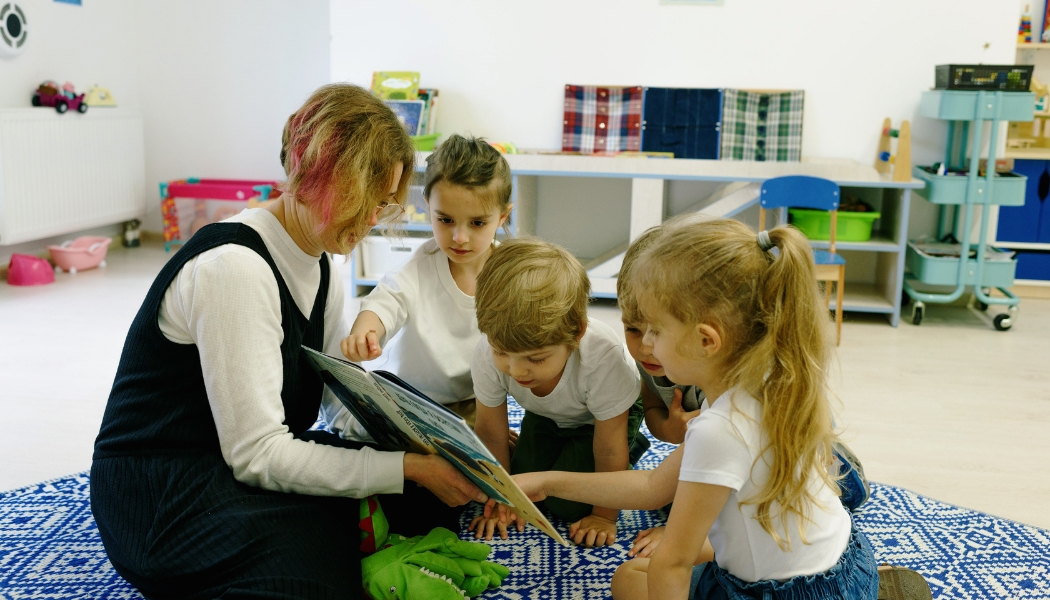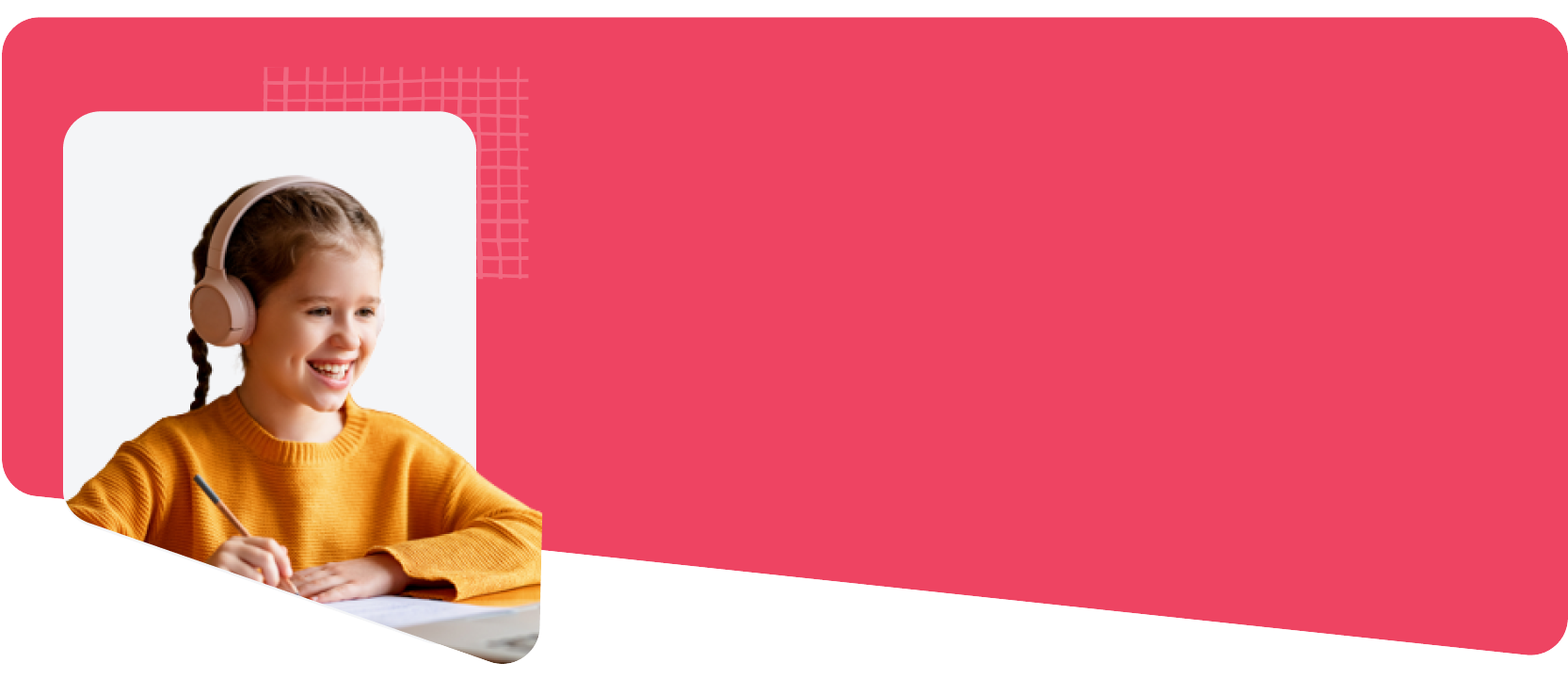Many children struggle with reading, not because they lack exposure to books, but because they’ve never been taught how reading actually works. Letters, sounds, patterns, these are the building blocks, and they don’t come naturally to everyone.
This is where structured literacy comes in. It’s a method rooted in decades of research that focuses on teaching children the mechanics of reading in a clear, logical, and proven way. Instead of guessing from context or memorizing whole words, children learn how to break down language into parts they can understand and apply.
TL;DR
-
Structured literacy teaches reading through clear, step-by-step instruction in essential language skills like sounds, letters, and word parts.
-
It benefits all readers. Not just those with learning difficulties, by reducing confusion and strengthening foundational skills.
-
FunFox offers level-based, small-group reading sessions that focus on strategy, fluency, and comprehension.
-
Live teaching, consistent feedback, and engaging resources help children build confidence and improve week by week.
What Is Structured Literacy Instruction?

Structured literacy instruction is a teaching method that helps children understand how reading works by breaking it down into clear, manageable steps. Instead of encouraging guessing or memorization, it shows them exactly how sounds, letters, and words connect.
The process begins with phonology, where children learn to hear and work with the individual sounds in words. From there, they move into phonics, understanding how letters or letter combinations represent those sounds. Once they’re comfortable with that, instruction continues with:
-
Syllables, teaching them how to divide words into smaller parts for easier reading and spelling
-
Morphology, where they explore word parts like prefixes, suffixes, and root words
-
Syntax, helping them understand sentence structure and grammar
-
Semantics, which builds their vocabulary and understanding of meaning
These components are taught explicitly (clearly explained and demonstrated) and systematically (in a logical order where each skill builds on the last). Teachers guide children through each step, offer lots of practice, and only move ahead when the child is ready.
This approach is especially helpful for children with reading difficulties like dyslexia, but it benefits any learner who needs a solid foundation in how English sounds and patterns work. Structured literacy focuses on building reading skills that last, instead of relying on memorization or passive exposure to books.
Core Components of Structured Literacy

Structured literacy instruction is built on six core components. Each one targets a specific skill area that supports accurate, fluent, and meaningful reading. These elements work together, and when taught in the right sequence, they help children read with confidence and understanding.
1. Phonology
This involves teaching children to hear and work with the individual sounds in spoken language. Skills like rhyming, syllable counting, and breaking words into sounds (called phonemic awareness) form the base of strong decoding.
2. Sound–Symbol Association (Phonics)
Once children can hear sounds, they learn how each sound connects to a letter or group of letters. For example, the /s/ sound is linked to the letter s, and the /sh/ sound to the letters sh. This is the foundation for sounding out and spelling words.
3. Syllable Instruction
Syllables are the building blocks of longer words. Children learn to break words like napkin or basketball into syllables, which helps with both reading and writing. They are also taught common syllable types, such as open and closed syllables.
4. Morphology
Morphology teaches children how word parts like roots, prefixes, and suffixes carry meaning. Learning that unhappy means not happy or that replay means to play again gives children the tools to understand and decode more complex words.
5. Syntax
This focuses on sentence structure, grammar, and punctuation. Children learn how to form complete sentences, understand word order, and identify parts of speech. These skills help them write clearly and understand the meaning of longer texts.
Read more: Understanding Syntax: Definition, Types and Examples
6. Semantics
Semantics is the study of meaning. Here, the focus is on building vocabulary and comprehension. Children are taught how to use context to understand new words, ask and answer questions, and connect reading to real-world knowledge.
When taught together, these six components give children a strong, step-by-step path to reading success. This is what makes structured literacy different from general reading exposure; it covers every layer of the reading process with care and clarity.
Who Benefits from Structured Literacy (And Why It Works for All Learners)

Structured literacy is often recommended for children with reading difficulties, but the truth is that it supports a wide range of learners, not just those who struggle. Because it teaches reading in a clear, step-by-step way, it helps every child build a strong foundation, no matter their starting point.
-
Children with dyslexia or learning differences often rely on structured literacy to make sense of reading. These children may have trouble connecting sounds to letters, decoding unfamiliar words, or remembering how words are spelled. Structured literacy gives them tools they can use again and again, so reading feels less confusing and more manageable.
-
Early readers also benefit. Even if a child doesn’t show any signs of struggle, this approach helps prevent gaps in learning. Instead of skipping over key skills or relying on guesswork, children learn how language works from the very beginning.
Also read: Importance of Early Childhood Literacy Tutoring Programs
-
English language learners (EAL students) need extra support in understanding the sound and structure of English. Structured literacy helps them clearly understand how English letters and patterns behave, which speeds up reading and vocabulary growth.
-
Students with attention or processing challenges often do better with structured literacy because of its predictability. Lessons are consistent, skills are reinforced, and students know what to expect. This creates a stable learning environment where they can focus without feeling overwhelmed.
How Structured Literacy Is Taught?

Structured literacy instruction is not just about what is taught, but how it’s delivered. The teaching methods used are intentional, focused, and designed to build mastery through repeated exposure, guided practice, and ongoing feedback.
1. Instruction Is Explicit
Teachers explain every new concept clearly and directly. There’s no assumption that students will figure things out on their own. For example, if children are learning the /ch/ sound, the teacher models the sound, shows how it’s written, and provides examples like chip, chess, and bench. This helps reduce confusion and builds trust in the learning process.
2. Lessons Are Cumulative
Each lesson builds on what was previously taught. Children don’t just learn a sound and move on. That sound is reviewed, reinforced in new contexts, and combined with other skills. This approach strengthens retention and keeps earlier skills active while introducing new ones.
3. Practice Is Structured and Guided
Rather than free reading or random activities, children follow a plan that supports the day’s focus. For example, if the lesson is on silent e words, they’ll read, spell, and sort words like cake, home, and ride. The goal is targeted practice that connects reading, writing, and sound awareness.
4. Errors Are Opportunities for Teaching
Instead of correcting a mistake with a quick “no,” teachers pause to revisit the concept. If a child reads cot instead of coat, the teacher might ask: “What sound does oa make together?” This keeps instruction focused and prevents repeated guessing.
5. Multisensory Activities Reinforce Concepts
Children use visual, auditory, and movement-based tasks to strengthen learning. They might trace letters in sand while saying the sound, build words with letter tiles, or clap syllables in a word. This makes abstract concepts more concrete and memorable.
Also check this out: Exciting Sensory Activities to Spark Your Child's Imagination
6. Assessment Guides Instruction
Teachers use informal checks daily and more formal assessments at regular points to know what each student has mastered and where to adjust. This ensures that children receive support before gaps widen.
Structured literacy is taught with purpose at every step. It gives children time to absorb, apply, and strengthen what they’re learning through meaningful instruction, not guesswork or trial-and-error.
Structured Literacy vs Balanced Literacy: What’s the Difference?

Structured literacy and balanced literacy are two common approaches to teaching reading, but they use very different methods. Understanding how they compare can help you make more informed choices about your child’s education.
Structured literacy is skill-focused. It teaches reading by starting with sounds and building upward to words, sentences, and comprehension. Every part of the instruction is planned, and students are shown exactly how to connect sounds with letters, blend words, break them into parts, and understand meaning. Each step is taught directly, practiced consistently, and revisited as needed.
Balanced literacy, on the other hand, emphasizes exposure to books and encourages children to pick up reading naturally through stories, context, and self-discovery. While it includes some phonics instruction, it often relies on strategies like guessing unknown words using pictures or sentence context, rather than sounding them out.
Here’s how they differ in key areas:
|
Element |
Structured Literacy |
Balanced Literacy |
|---|---|---|
|
Focus |
Sound-to-symbol and decoding skills |
Meaning-making and reading for enjoyment |
|
Instruction Style |
Direct, sequential, skill-based |
Indirect, flexible, and often child-led |
|
Error Correction |
Mistakes are corrected through re-teaching |
Children are often encouraged to “figure it out” |
|
Reading Materials |
Decodable books matched to skill level |
Leveled readers with rich illustrations |
|
Target Learners |
All readers, especially those who struggle |
Often assumes children will learn through exposure |
While balanced literacy works well for some children, research shows that structured literacy produces stronger, more consistent outcomes, especially for early readers, struggling learners, and children with dyslexia or processing challenges.
How does FunFox support reading Through Clear, Skill-Focused Instruction?

FunFox’s Readers Club is designed to help children become stronger, more confident readers through weekly small-group sessions that focus on real reading skills, not guesswork or memorization.
Here’s how the approach works inside the program:
-
Children are grouped by reading level, not just by age.
FunFox places students in small groups (3–6 children) based on their current ability and needs. This ensures each child is working on texts, skills, and strategies that match their stage of reading development. -
Sessions are taught live by dedicated reading educators.
All sessions are conducted in real time over Zoom by trained FunFox teachers. Every lesson has a clear learning goal, whether it’s building fluency, improving comprehension, or analyzing text structure. -
Each class blends reading strategies with discussion and feedback.
Students don’t just read silently. They participate, share ideas, and learn how to apply reading strategies while working through both fiction and nonfiction passages. Teachers offer immediate feedback, guide thinking, and adapt based on how students respond. -
The FunFox learning portal keeps practice consistent.
Between live sessions, children have access to interactive digital resources, including worksheets and games. These tools reinforce what’s covered in class and support independent reading habits at home. -
Progress is visible and shared.
FunFox teachers give regular feedback based on each child's participation and growth. This helps families see where their child is improving and where extra support may be needed. -
The structure stays fun.
Even while focusing on skill-building, lessons are designed to be engaging and social. The program includes reading challenges, group activities, and events that keep children excited to come back each week.
Join a small-group Readers Club session with FunFox and discover how targeted support builds confident, capable readers. Book a free call or enroll today.
FAQs
1. What’s the difference between structured literacy and phonics?
Phonics is one part of structured literacy. While phonics teaches the relationship between sounds and letters, structured literacy includes additional components like syllables, word structure, grammar, and meaning, offering a complete approach to reading.
2. Can structured literacy be used at home by parents?
Yes, but only when guided by a clear plan or program. Structured literacy requires a specific order of instruction, and skipping steps can confuse children. Many parents use structured resources or work with educators who follow this model.
3. Does structured literacy help with spelling as well?
Absolutely. Because it teaches how sounds map to letters and how words are built from roots, prefixes, and suffixes, children develop stronger spelling skills over time, especially with consistent practice.
Also read: Spelling Activities and Worksheets for Year 3
4. How long does it take to see progress with structured literacy?
It depends on the child’s starting point and how consistently the approach is applied. Many students begin to show noticeable gains in decoding, fluency, or comprehension within a few months of focused instruction.
5. Is structured literacy suitable for advanced readers?
Yes. Even strong readers can benefit from structured literacy, particularly when it comes to spelling, grammar, and vocabulary. It helps refine skills and close small gaps that may affect later academic writing and reading analysis.














